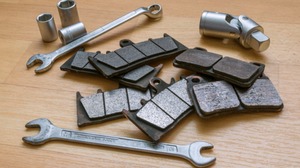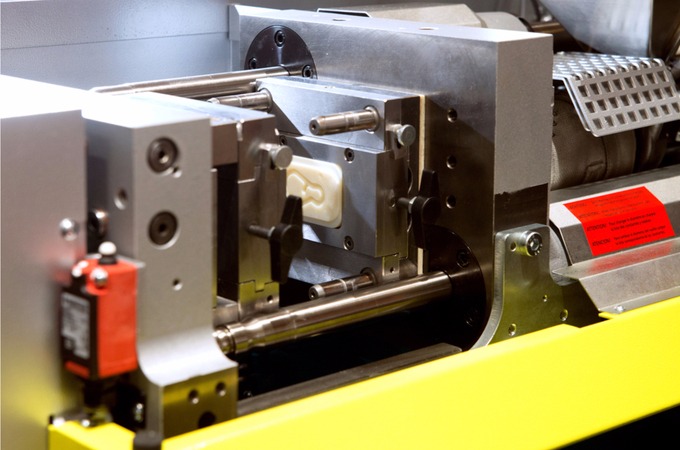There’s so much that goes into developing an injection molded product for manufacture — proper design, prototyping, material selection and more — that it’s easy to overlook one of the most important aspects of the process: The injection mold tool itself. The choices you make in injection mold tooling resonate throughout the manufacturing process, meaning that they should never be taken lightly.
Interestingly, since injection mold tooling is so important to the process, many entrepreneurs and even some engineers and technicians might not be completely aware of the choices that they can make in the process. Without knowing the options and the impact of the tool on injection molding, it’s that much more difficult to make the right decisions to ensure a more successful part. Let’s take a look at what goes into injection mold tooling — covering tool manufacture, the injection molding process itself, and tool maintenance — and how you can fine-tune the process for better, more successful final products.
Injection Mold Tool Manufacture
In injection molding, what we call the “tool” is also referred to as the mold or the die. In short, it’s where the injection molding process occurs. For that reason alone, it should be even clearer why it’s important to pay attention to the tool throughout your manufacturing process.
Smart part design that follows best practices for injection molding and manufacturability certainly plays a big role in how conducive your injection molding tool is to part quality. Though aside from the design of the part itself, the design of the tool can be just as important. As an overview, some of those design elements include:
- Venting
- Gating
- Part line location
- Runners
- Bubblers
- Material selection
- And more
We’ll cover some of these elements in a bit more depth, but first, let’s do a quick review of part design for manufacturability, and why it’s important.
Just like any manufacturing process, injection molding has certain best practices that are most conducive to the realities and practicalities of the process. Some of these best practices include rounded corners, minimum and uniform wall thicknesses, simpler geometries and so on. These best practices are in place to avoid some of the most common pitfalls and part failure causes in injection molding, which can be caused by poor material flow, burned parts, irregular cooling times and more.
 Which brings us to best practices for injection mold tooling design. Just like part design best practices, tooling design best practices are in place to reduce the chances of part failure and other manufacturing errors. Tooling design best practices can also cut overall cycle times (and thus, costs) by reducing things like flash on your injection molded parts.
Which brings us to best practices for injection mold tooling design. Just like part design best practices, tooling design best practices are in place to reduce the chances of part failure and other manufacturing errors. Tooling design best practices can also cut overall cycle times (and thus, costs) by reducing things like flash on your injection molded parts.
Venting is one of the most important elements of injection mold tooling design, and it can have a major impact on your finished product. In fact, if you’re experiencing part failures or other quality issues that aren’t easily explained, venting is likely to be the first factor you’ll want to check. In an injection mold tool, venting is the method by which air or other gases are allowed to escape from the mold cavity as it’s filled with the heated liquid material. Without proper venting, air and other gases can become heated to the point of combustion, which will definitely burn the piece, and may also deform or weaken it.
Venting also prevents air from taking the place of material in the cavity, resulting in short shot parts that must be rejected. The challenge in venting is providing enough space for air to escape, but not so much that it affects the final form of the part, or causes flashing or other inefficiencies.
Part line location refers to the location on your part where the two halves of the injection mold tool meet (and, later, split apart). This is the area of your part most easily subject to flashing, which can be caused by an imperfect fit at the touchpoint, as well as other factors like opposing pressures or force from the injected material. Your best defense against these costly part errors is simply a high standard of quality and a thorough inspection of the tool to ensure that it will function as intended. Some injection mold manufacturers might tell you that flash is unavoidable, but this is simply not the case.
The material selection of your injection mold tooling is also critically important to your overall manufacturing process, your production costs, and your bottom line. Tool steel is typically cited as the standard material for injection molds, and this is correct, for high-volume production runs over 100,000 pieces. In those cases, the strength and durability of tool steel cannot be recreated with other materials. However, for low-volume or even prototype production runs, other, lower-cost materials are perfectly acceptable for use in tooling. Aluminum tools can provide reliable quality in quantities up to 100,000, and for very short runs.
RevPart does not make aluminum molds and we do not recommend our customers use inferior aluminum molds. We offer a prototype injection mold that is made from 718 tool steel and has a warranty of 10K cycles. We also offer a production mold made of S136 tool steel and carries a warranty of 500K cycles. Although this mold can produce over a million parts.
Injection Mold Tooling Maintenance
 No matter what material you choose for your injection mold tooling, it’s important to conduct proper maintenance in order to get the most value from your mold. That means inspecting and cleaning the mold regularly to remove any buildup remaining substrate, which will alter the appearance and quality of your part with enough volume. Be sure to use a cleaning material and a cleaning process that are suitable for your tool material.
No matter what material you choose for your injection mold tooling, it’s important to conduct proper maintenance in order to get the most value from your mold. That means inspecting and cleaning the mold regularly to remove any buildup remaining substrate, which will alter the appearance and quality of your part with enough volume. Be sure to use a cleaning material and a cleaning process that are suitable for your tool material.
Injection mold tool maintenance also covers the non-cavity parts of a mold, like the vents, the runners, the gates and more. Material can accumulate in these areas as well, which will affect the flow and fill for your product; and can eventually result in lower part quality and more rejections.
As you can see, the impact of tooling on injection molded parts can be major, at every step of the way. It’s well worth your time and investment to know what to identify, make the right decisions, and keep your molding tool operating the way it should.



